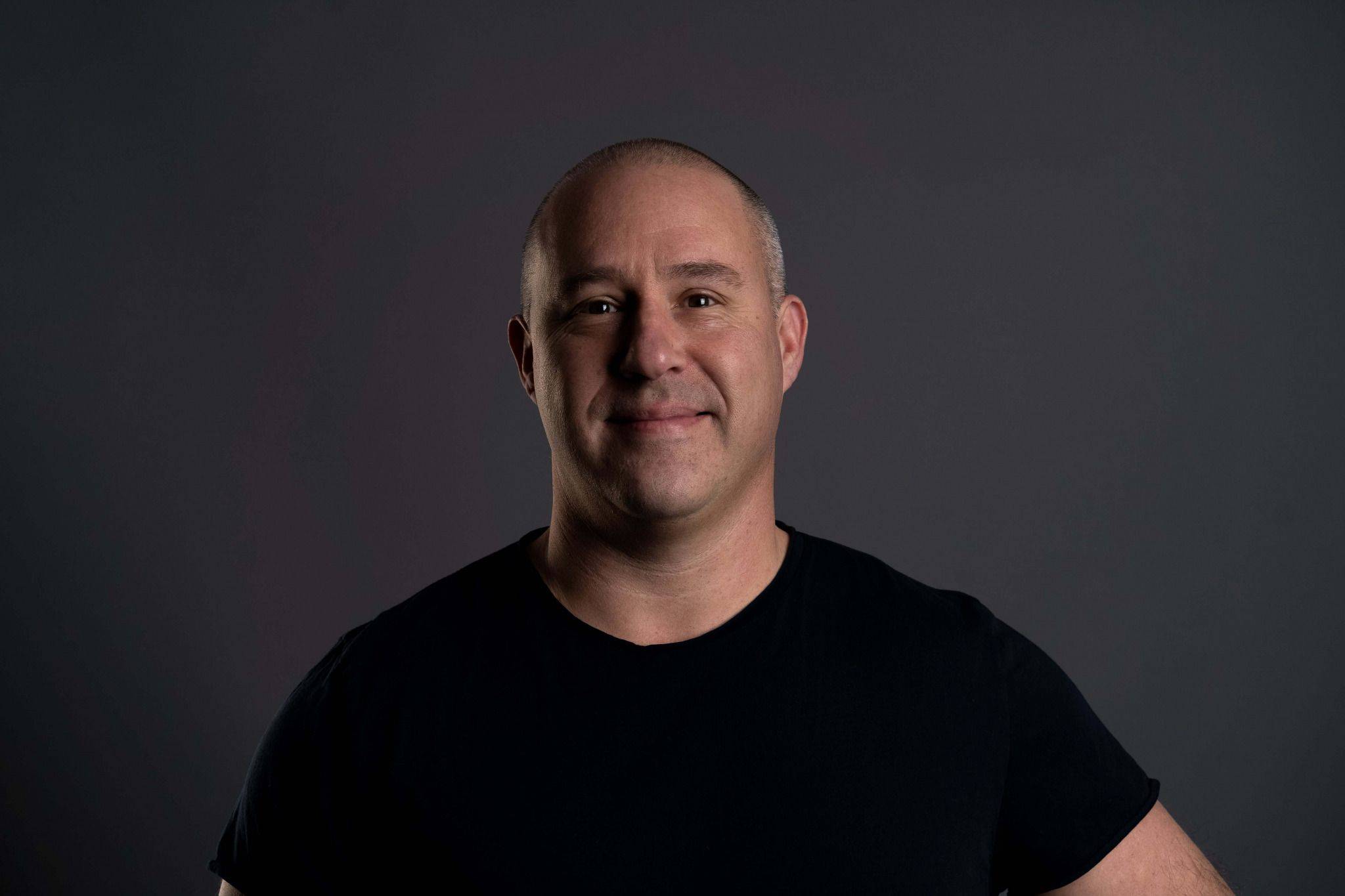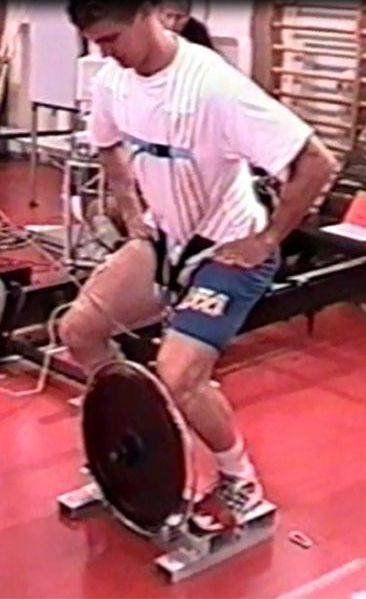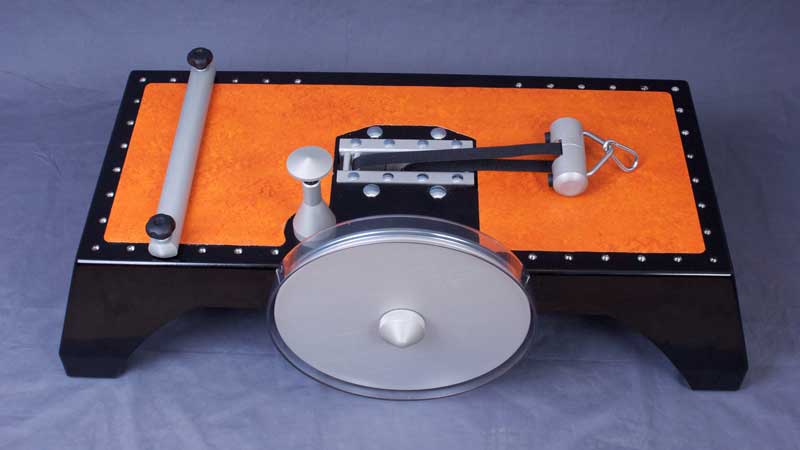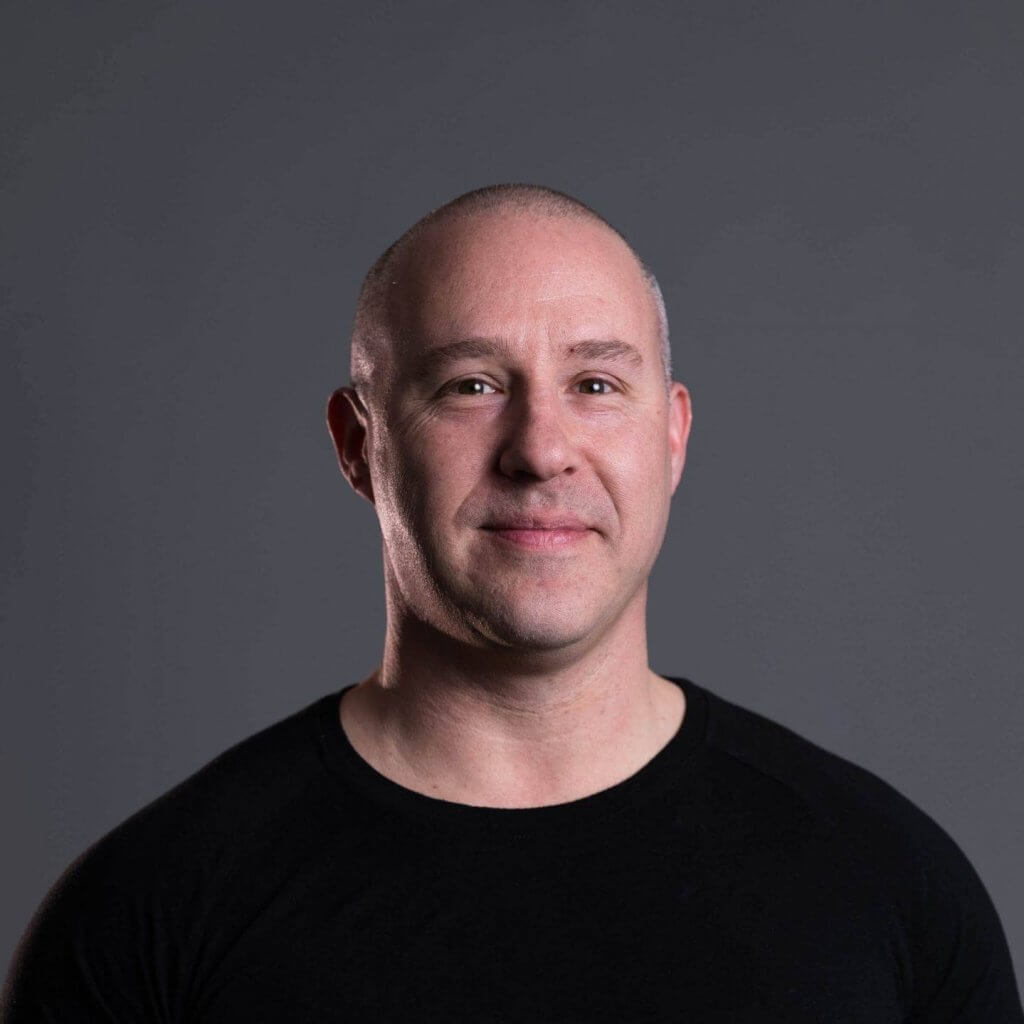Historia
Historia


VI TROR PÅ ATT GÖRA MÄNNISKOR STARKARE.
Sedan starten 2011 har Exxentric exponentiellt utökat sitt partnernätverk och fortsätter att tillhandahålla styrketräningsutrustning i 65+ länder över hela världen. Idag ser vi hur Svänghjulsträning tillämpas i en mängd olika miljöer: professionell idrott, rehabilitering samt hälsa och fitness.
Exxentrics mål och vision har varit densamma sedan starten: att bygga apparater som gör det möjligt för människor att bli starkare och få den styrka de önskar. Att ha styrkan att uthärda och lyckas är viktigt inte bara för prestation, utan i livet i allmänhet. Därför innoverar vi för att kunna tillhandahålla effektiva verktyg och metoder som gör det möjligt för människor att lyckas när det gäller. För strength matters är strength matters, i alla delar av livet.
Fredrik Correa, M.D., VD

Tidslinje och utveckling av nycklar
Svänghjulsträning har en hundraårig historia och våra grundare började arbeta med svänghjulsenheter för styrka och konditionering mer än ett decennium innan de grundade Exxentric 2011. Här är en tidslinje över Exxentrics utveckling från prototypidé till varumärket Svänghjulsträning :
2001-2011: Fredrik Correa och Mårten Fredriksson, vänner och medgrundare av Exxentric, arbetade båda i samma ishockeyklubb när de upptäckte ett kryphål i träning av ishockeyungdomar. Kort därefter började de utveckla ett träningsredskap med svänghjul baserat på en prototyp. Prototypen bestod av en axel med ett svänghjul på en liten platta och den var konstruerad för rymdbruk. De trodde att prototypen kunde ligga till grund för en helt ny apparat.
2011: Fredrik och Mårten färdigställde sin nästa generations Svänghjulsträning , kBox 1.0, och varumärket Exxentric föddes.
2021: Exxentric firar 10 starka år i Svänghjulsträning . Ett decennium senare används Exxentrics svänghjulsenheter i många olika miljöer: professionell sport, rehabilitering, hälsa och fitness, hemmaträning och många fler. Tillsammans med sina pålitliga partners och lojala kunder växer sig Exxentric starkare för varje dag.
Svänghjulsträning historia
Den första kända studien om träning med svänghjulsmotstånd genomfördes 1924 av forskarna Hansen och Lindhard vid Laboratoriet för gymnastikens fysiologi vid Köpenhamns universitet (1). De använde ett svänghjul tillverkat av bly och stål för att göra det som alla anständiga muskelfysiologer gör när ingen ser på: mäta kraftkurvor under bicepskontraktion.
Hansen och Lindhard hänvisar dock till en stationär cykel som använder ett svänghjul som motstånd i en studie som genomfördes 1913 av en kollega från samma institution, professor Augusti Krogh. Trots att Kroghs experiment främst handlade om fysiologiska ämnen som skelettmuskulatur, kapillärer och andning, blev han en pionjär inom Svänghjulsträning. Krogh skulle få Nobelpriset 1920 för sitt arbete med kapillärernas funktion.
Detta är dock inte den första dokumenterade svänghjulsanordningen. Gymnasticon (bilden), en svänghjulsanordning som uppfanns 1796 av fransmannen Francis Lowndes, är äldre än så.
Styrka träning i rymden
Sedan dess har svänghjulet använts i många mekaniska applikationer för att ackumulera rörelseenergi, för att sedan dyka upp igen inom träning i slutet av 1980-talet. På den tiden var det många inom den vetenskapliga träningsfysiologin som försökte lösa problemet med atrofi och benförlust i mikrogravitation, dvs. rymdresor. Steroider, elektrostimulering, gummiband och hydraulik har prövats, men alla har misslyckats på ett eller annat sätt.
Vid den tiden utvecklade svenska forskare vid Karolinska Institutet, ett av Europas största och mest prestigefyllda medicinska universitet i Stockholm, en svänghjulsenhet som var utformad för att hjälpa astronauter att bibehålla styrka och massa i skelettmusklerna i rymden. Projektet stöddes av European Space Agency (ESA), National Aeronautics and Space Administration (NASA) samt Rymdstyrelsen i Sverige.
År 1994 publicerade de en studie (3) där de konstruerade en bensträckare med svänghjul. De genomförde ett antal studier under de följande åren och utvecklade ett par träning med svänghjulsmotstånd som liknar traditionella träning , som leg curl, leg extension och så vidare, men där viktstacken ersatts av ett svänghjul.
Frustration i coachningen
Det var då jag först fick höra talas om Svänghjulsträning. Jag hade precis avslutat mina studier på Gymnastik- och idrottshögskolan i Stockholm där jag också träffade min vän och medgrundare av Exxentric, Mårten Fredriksson. Vid den tiden arbetade vi båda i samma ishockeyklubb och tränade elitjuniorer. Jag tränade 16-17-åringar och Mårten 18-19-åringar. Vi hade många diskussioner om de talangfulla spelare från olika lokala lag som rekryterades till vår klubb under de tidiga junioråren.
Problemet var att juniorspelarna inte hade fått någon undervisning i träning , särskilt inte när det gällde att använda fria vikter. Vi upplevde att vi under deras fyra juniorår ägnade mycket tid åt att lära dem hur man lyfter istället för att förbättra deras fysik och prestation i den utsträckning som hade varit möjlig om de hade varit bättre på att lyfta. Eftersom de var starka och begåvade barn var det frustrerande att vi inte kunde belasta dem tillräckligt, eftersom deras bristande teknik inte tillät det.
I forskningslaboratoriet
Strax efter att jag fick reda på svänghjulsenheterna började jag arbeta med några projekt för att utveckla svänghjulsenheter. Detta skedde i laboratoriet för muskel- och träningsfysiologi vid Karolinska Institutet där jag samarbetade med forskare.
När jag var i labbet och arbetade med ett EMG-projekt (elektromyografi) relaterat till de traditionella svänghjulen, såg jag en prototyp som tillverkats av en ingenjör vid namn Håkan Eriksson. Han arbetade på institutionen för biomedicinsk teknik på Karolinska sjukhuset, tvärs över gatan. Han hjälpte forskarna att bygga alla prototyper, men han var också en hängiven hastighetsåkare på is. För att lösa sitt problem med off-ice träning hade han byggt en prototyp bestående av en axel med ett svänghjul på en liten platta. Han använde den för halvknäböj med hög repetition och låg tröghet för att försöka efterlikna det metaboliska arbetet vid skridskoåkning.

Bygga en prototyp
Jag kände att Håkans prototyp kunde ligga till grund för en helt ny produkt. Så Mårten och jag träffades i labbet och diskuterade möjligheten att bygga en multiträningsapparat med svänghjul baserad på prototypen, men med större rörelsefrihet. Vi ville att den skulle fungera på ett liknande sätt som fria vikter, men använda ett svänghjul som motstånd istället. Vi presenterade idén med några skisser för forskningsledaren, som gillade den och vi började utveckla vår baby.
Vi började med att öka höjden på lådan för att få axeln lägre, vilket ökade djupet i knäböj. Vi ökade ytan på ovansidan för att möjliggöra mer laterala rörelser och en längre axel för att kunna montera fler svänghjul, och så vidare. När produkten var klar hade vi lagt ner otaligt många fler timmar än vi ursprungligen hade föreställt oss eller räknat med.
Prototypen fungerade, men var långt ifrån färdigutvecklad och många förbättringar återstod att göra. Den ledande forskaren och hans företag hade dock ett mer kortsiktigt perspektiv och bestämde sig för att släppa prototypen som en produkt på marknaden. Efter lanseringen fick vi mycket feedback som överensstämde med våra egna tankar om hur vi kunde förbättra enheten ytterligare och även nya idéer.
Grundade Exxentric 2011
Efter vår tid i forskningslabbet gick Mårten och jag skilda vägar. Jag hade fullt upp med läkarutbildningen och tog examen från Karolinska Institutet 2006. Men vi visste att vi hade startat projektet för att fylla tomrummet för idrottare och patienter och insåg att det kunde göras så mycket bättre - det måste göras.
Under åren diskuterade Mårten och jag att förverkliga våra idéer och plötsligt stötte vi ihop med Kjell Insulander, som var producent och underleverantör av metalldelar till andra företag. Han var intresserad av att utbilda sig och även av att bygga en egen produkt. Så vi bestämde oss för att lansera Exxentric och startade fas två. Med våra idéer och Kjells ingenjörskunskaper kunde vi 2011 släppa nästa generations Svänghjulsträning , kBox 1.0.
Efter en period av snabb tillväxt släppte Exxentric den tredje versionen av sin huvudprodukt, kBox3. Det var vid denna tidpunkt som Svänghjulsträning började växa och expandera globalt. Exxentric började sälja utrustning i USA och teamet växte. Nu några år senare är vi inne på den 4:e generationen där kBox kommer i tre olika versioner: Active, Lite och Pro och utöver det en enhet för horisontella övningar, kPulley. Elektroniken och app-sidan har utvecklats grundligt och vi tillhandahåller nu ett vetenskapligt validerat realtidsfeedbacksystem som kallas kMeter.

Exxentric år 2024
När vi startade 2011 var vi väldigt få personer med en enkel idé och en enda prototyp: kBox 1.0. Idag, 13 år efter att Exxentric föddes, representerar vi stolt det ledande Svänghjulsträning i världen. När vi ser tillbaka på vår resa - som startade den 23 februari 2011 - har Exxentric haft otaliga prestationer och framgångar.
Under åren har Exxentric haft en stabil tillväxt och blivit det ledande teknikföretag inom Svänghjulsträning som vi är idag, och vi är övertygade om att vi kommer att fortsätta växa oss ännu starkare. För strength matters, i alla delar av livet.
Referenser
- Hansen T.E, Lindhard, J. Om det maximala arbetet i mänskliga muskler, särskilt armbågens böjare. 1924. Laboratoriet för gymnastikens fysiologi, Köpenhamns universitet.
- Krogh, A. Skand. En cykelergometer och andningsapparat för experimentell undersökning av muskelarbete.Arch. Physiol. 1913; 33:375-395.
- Berg, HE, Tesch A. En tyngdkraftsoberoende ergometer som kan användas för träning i rymden. Aviat Space Environ Med. 1994 Aug;65(8):752-6.
En annan version av denna text publicerades på Freelap USA:s blogg. Läs mer av

